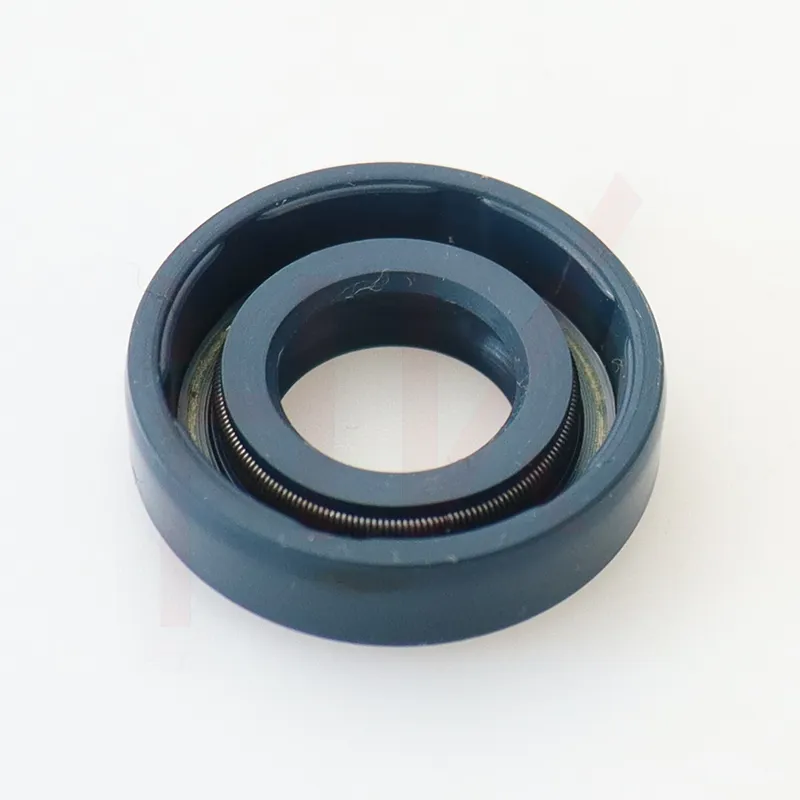Dec . 02, 2024 00:30 Back to list
high pressure rotary shaft seals
High Pressure Rotary Shaft Seals An Overview
In various industries, such as automotive, aerospace, and manufacturing, high-pressure rotary shaft seals play a crucial role in ensuring the efficient operation of machinery and equipment. These seals are specifically designed to prevent the leakage of fluids—be it oil, grease, or other lubricants—while adapting to the dynamic movement of rotary shafts under high-pressure conditions. This article aims to delve into the significance, design, materials, and applications of high-pressure rotary shaft seals.
Importance of High-Pressure Rotary Shaft Seals
High-pressure rotary shaft seals are essential components in machinery that involve rotating parts, which are often subjected to challenging conditions, including high speeds, extreme temperatures, and significant pressure differentials. Their primary function is to contain the lubricants within the systems and prevent external contaminants from entering. This containment is vital for longevity and reliability, minimizing maintenance costs and downtime caused by leaks. Additionally, these seals help ensure that the machinery operates efficiently, as a loss of fluid can lead to friction, overheating, and eventual failure of components.
Design and Functionality
The design of high-pressure rotary shaft seals must accommodate axial and radial movements while maintaining a secure barrier against leakage. Common configurations include lip seals, which consist of a flexible lip that hugs the shaft, and U-cup seals that create a sliding seal against the shaft's circumference. The design often incorporates a spring mechanism that applies constant pressure on the lip against the shaft, ensuring a tight fit and preventing wear over time.
One of the critical considerations in the design of these seals is their ability to withstand high pressures and temperatures. Proper sealing performance requires precise tolerances and surface finishes, alongside effective lubrication regimes to reduce friction between the seal and the shaft. The materials used for these seals are chosen based on their mechanical and chemical resistance properties, ensuring that they can withstand the operating environment.
Material Selection
high pressure rotary shaft seals

The materials utilized in the manufacturing of high-pressure rotary shaft seals directly impact their performance and longevity. Common materials include elastomers like nitrile rubber (NBR), fluorocarbon rubber (FKM), and polyurethane. NBR is widely used due to its excellent abrasion resistance and compatibility with mineral oils. FKM offers enhanced temperature and chemical resistance, making it suitable for more aggressive environments. Polyurethane seals are known for their tough durability and high elasticity, making them ideal for high pressure applications.
In some high-performance applications, composite materials or specially treated metals may be employed to enhance durability and performance. The choice of material plays a significant role in the seal's ability to perform under pressure and temperature fluctuations, directly affecting the overall reliability of the machinery it is installed in.
Applications
High-pressure rotary shaft seals find their applications in numerous sectors, including
1. Hydraulic Systems In hydraulic actuators and pumps, these seals prevent hydraulic fluid leakage and ensure efficient operation under high pressures. 2. Automotive They are found in transmissions, engines, and steering systems, where leak prevention is vital for operational efficiency and safety. 3. Aerospace In aircraft, these seals are crucial for preventing fluid leaks in hydraulic systems and ensuring the reliability of various mechanisms.
4. Manufacturing They are used in conveyor systems, hydraulic presses, and other machinery where rotating shafts require reliable sealing solutions to maintain productivity.
Conclusion
High-pressure rotary shaft seals are indispensable components in modern machinery, ensuring the safe and efficient operation of rotating systems across multiple industries. Their design, material selection, and implementation are vital to overcoming the challenges posed by high pressures and dynamic movements. As industries continue to evolve, so too will the technology behind these seals, driving improvements in durability, performance, and reliability to meet the increasing demands of modern engineering. By understanding their significance, manufacturers can better appreciate the need for high-quality rotary shaft seals in their operations, leading to a more efficient and sustainable future.
-
TCN Oil Seal Metal Ring Reinforcement for Heavy Machinery
NewsJul.25,2025
-
Rotary Lip Seal Spring-Loaded Design for High-Speed Applications
NewsJul.25,2025
-
Hydraulic Cylinder Seals Polyurethane Material for High-Impact Jobs
NewsJul.25,2025
-
High Pressure Oil Seal Polyurethane Coating Wear Resistance
NewsJul.25,2025
-
Dust Proof Seal Double Lip Design for Construction Equipment
NewsJul.25,2025
-
Hub Seal Polyurethane Wear Resistance in Agricultural Vehicles
NewsJul.25,2025
-
The Trans-formative Journey of Wheel Hub Oil Seals
NewsJun.06,2025
Products categories
















